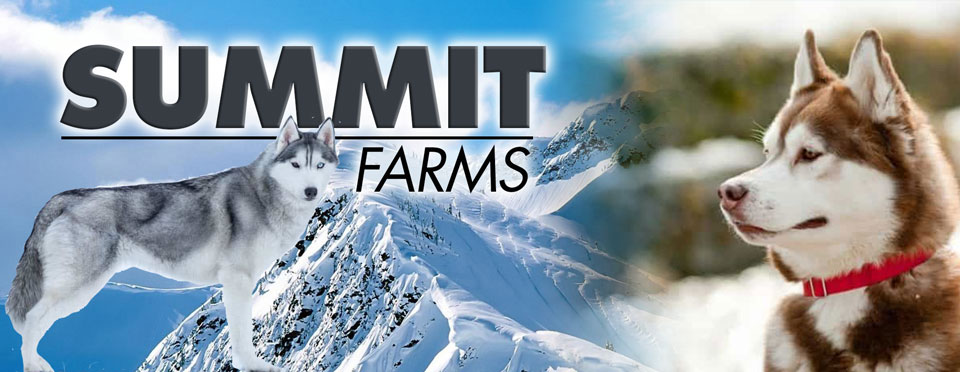Alaskan Husky
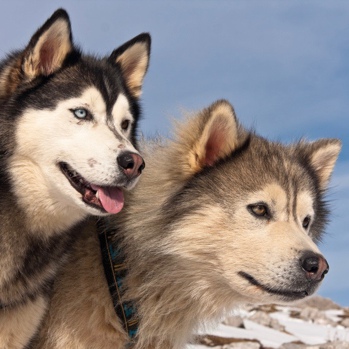
Exercise and Activity Levels
Outside of being used as a working sled dog, it is almost impossible to satisfy an Alaskan Husky’s desire and need for exercise. These dogs have been bred and selected for speed, strength, and endurance, and they are not suitable for most people needing to hold down a day job. At a minimum, they need around two hours of vigorous exercise daily to satisfy their physical and inherited behavioural needs.
They are ideal companions for committed triathletes or marathon/ultra-marathon runners, as they will happily keep pace with their owners for hours, whether the owner is running or cycling. Without sufficient exercise, they are very prone to weight gain, destructive behaviour, and excessive vocalisation.
Grooming
Alaskans do not require much grooming. When not active, they spend much of their time cleaning themselves, and if kept with other dogs, will indulge in mutual grooming, as they would with their pack. The coat is said to be self-cleaning, as dirt and dust does not usually cling to it for any length of time. For most of the year, shedding of the light coat is minimal; however, they undergo a very heavy moult twice a year, at which times coming and brushing frequently will help prevent a build-up of dead hair.
If not exercised on paved surfaces, most Alaskan Huskies will need their nails clipped every few weeks. Introducing this routine to them when puppies minimises stress, for both dog and owner, when they are older and able to put up a fight, should they so wish. Good dental hygiene is every bit as important for dogs as for humans, and once daily brushing with an appropriate brush and toothpaste is an excellent habit to develop in pups to prevent dental disease and tooth loss in older dogs.
Alaskan Malamute

Exercise and Activity Levels
Malamutes require a great deal of exercise, and benefit from activities involving huge energy expenditure. One-hour of lead walking daily is a minimum requirement, but this should really be augmented by the use of a weighted backpack or with running rather than walking.
In the United States, many people take part in adventure sports, such as skijoring with their Malamutes, but in milder climates roller-blading is one alternative option. In addition to this structured exercise, Malamutes need an enclosed garden in which to play, and should also be allowed to dig – a pursuit which they particularly enjoy. If unable to pursue these activities, a bored Malamute is likely to become destructive.
Grooming
The thick, heavy coat of the Alaskan Malamute sheds heavily all year round, but the breed also has spectacular moults over the course of several weeks, in which great clumps of hair are lost. Brushing is required on a daily basis in order to keep the coat in top condition, but bathing is very rarely necessary as it tends to strip essential oils from the hair and skin.
Malamutes have thick, strong nails which need to be clipped monthly. This should be done from puppyhood, when they will be more willing to cooperate, but care must be taken not to cut the nails too short in young dogs, as this will lead to aversion behaviour in later life. Brushing teeth is another very good habit to introduce to young dogs, and should be done a minimum of four times per week.
Alaskan Klee Kai
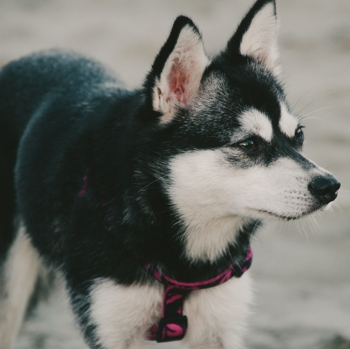
Exercise and Activity Levels
True to his working dog heritage, the AKK needs plenty of exercise. A minimum of one hours active running and chasing per day is required. Once this need is met, he happily curls up on the sofa and becomes a couch potato for the remainder of the day.
However, when the requirement for physical exertion is not met, the dog vents his energy in other ways. He’ll become highly strung or anxious, and divert his frustration into barking, chewing, or other destructive behaviours.
Grooming
The Klee Kai has a thick coat that is part of his Spitz-type heritage. It has a longer outer layer of course hair with a softer, downy undercoat. Whilst he needs little by way of bathing or clipping, the AKK is a shedder. He sheds moderately all year round, interspersed with a twice yearly blow out.
Despite not needing to be groomed in the traditional sense, after each walk it’s a good idea to check his coat for twigs, burrs, and foreign objects. And, like all dogs, daily teeth cleaning is strongly advised.
American Eskimo
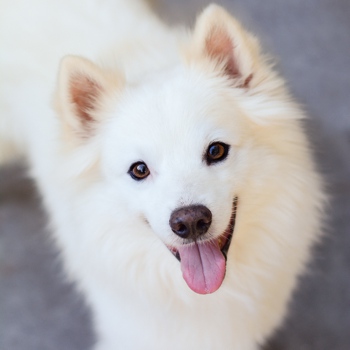
Exercise and Activity Levels
While a small dog, the American Eskimo Dog does have a high exercise requirement and although they can be kept in small living quarters, they should have access to a large garden and, ideally, would be brought on a minimum of two good walks a day. Spirited and humorous, the American Eskimo Dog loves to play games and solve puzzles.
Grooming
Brushing their famous coat several times a week should keep it in good condition and avoid matts. As with many dogs, regular baths are not advised as this can leave their coats lacklustre and dry. The American Eskimo Dog does not technically need their fur trimmed, as they will lose a good portion of their fur through shedding each year.
Siberian Husky

Exercise and Activity Levels
Siberian Huskies are dogs which were bred to survive and thrive in extreme climates as a working dog and they are therefore highly energetic. They need around 2 hours of walking a day and as much of this time of possible should be spent of the lead. Sufficient exercise and mental stimulation is very important for the breed to avoid serious behavioural problems which can develop if they are not provided with an appropriate means of release for their high energy levels. Huskies that are not exercised sufficiently can also tend to become overweight.
Grooming
Huskies do not require any specialist grooming but they have a thick coat that can shed heavily. It is therefore advisable to brush them on a regular basis to remove any lose hair. Their coat is formed from two layers, a protective outer coat covering a dense insulating undercoat. Other than regular brushing they do not have any special requirements.
Samoyed
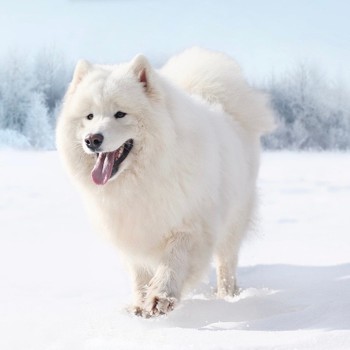
Exercise and Activity Levels
Samoyeds have been developed over centuries for physically demanding work: it is only in relatively recent times that they have lived as pets. They therefore require a lot of exercise to satisfy their natural drives and prospective owners should allow at least two hours per day for walking or jogging with their dog. They also enjoy performing a job and will carry groceries in a doggy backpack or pull a cart as part of their daily routine. They should also be given access to a secure garden, as they do best when allowed a territory to patrol.
Grooming
It should not surprise anyone to learn that the thick, abundant coat demands a lot of care. Samoyeds should be brushed daily, particularly when going through a period of heavy moulting, and need bathing approximately every six weeks under normal circumstances. Without this routine care, the hair can become densely matted, which may necessitate a full-body shave, something that is likely to be very traumatic for the dog.
Greenland
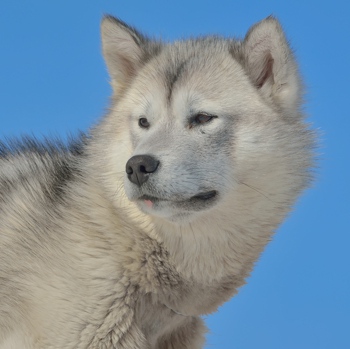
Exercise and Activity Levels
The Greenland Dog is a true athlete, and needs a great deal of exercise – probably more than it can realistically be provided with in most homes. Having been bred and refined for stamina and endurance, it should be provided with a minimum of one-and-a-half to two hours of exercise every day, but in reality, even this is less than ideal, unless the intensity is increased by providing a weighted backpack or a cart to pull. When not exercising, the breed exhibits low energy levels in the home.
Grooming
The thick coat largely takes care of itself, although its constant shedding of hair will prompt most owners to brush it at least once or twice a week. It undergoes two especially heavy moults in the spring and autumn, and may need daily brushing at these times to prevent the home being carpeted in hair. It should be washed very rarely, as the protective oils that are secreted from the follicles can easily be stripped, leaving the coat dry and the skin irritated.
Seppala Siberian Sled dog

Exercise and Activity Levels
The Seppala Siberian Sleddog needs a lot of exercise. When not pulling a sled the breed needs at least a daily walk or jog, but should not be excessively exercised in warm weather.
Grooming
The coat sheds heavily twice a year. During that time they need to be brushed and combed daily.
